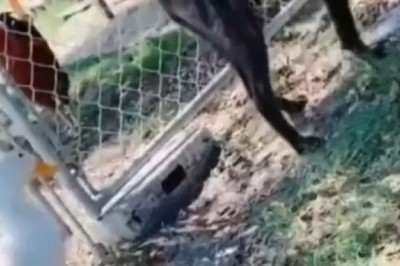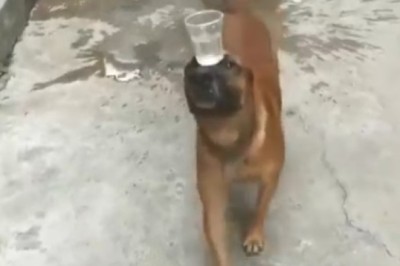5 Essential Tips to Safely Navigate a Vicious Dog Attack: A Comprehensive Guide
In recent years, the alarming rise in animal attacks in both urban and rural areas has underscored the importance of being equipped to handle such harrowing encounters in a manner that prioritizes the safety and well-being of both humans and animals involved. Dr. Stefanie Passos, a distinguished professor of veterinary medicine at Centro Universitário Newton Paiva, emphasizes the critical role of a composed response in dealing with animal attacks, citing that a measured approach can avert disaster and safeguard lives on both ends of the spectrum.
To empower individuals in effectively navigating the treacherous waters of an encounter with a vicious dog, Dr. Passos has outlined a series of expert tips and immediate response techniques geared towards defusing volatile situations and mitigating harm while ensuring the welfare of all parties involved.
1. Assess the Situation Calmly
Remaining composed in the face of danger is paramount to accurately assessing the scenario at hand. It is imperative to discern the nature of the animal and the gravity of the attack. Observing cues of aggression and understanding potential triggers for the dog's behavior can provide invaluable insights to de-escalate the situation effectively. Recognizing that animals often lash out due to perceived threats or the protective instinct of safeguarding their territory or offspring is key to diffusing tension.
2. Employ Appropriate Defense Techniques
In instances where escape is unfeasible, employing strategic defense techniques that minimize harm to both yourself and the dog is crucial. Utilizing objects to create a barrier between you and the animal can effectively deter aggression. Avoid sudden movements that may exacerbate the dog's fear or aggression. Exercise caution in immobilizing the dog to prevent inadvertent injury or triggering a more aggressive response.
3. Call for Immediate Assistance
Swiftly reaching out to emergency services is imperative to swiftly defusing the situation. Providing clear and concise details regarding the nature of the attack, the location, and the type of animal involved enables specialized animal handling services to respond promptly and effectively. Their expertise and training equip them to handle such volatile scenarios adeptly, ensuring the safety of both humans and animals involved.
4. Seek Medical Attention Post-Control
Even if the dog attack appears minor, seeking prompt medical attention post-incident is paramount. Dogs can transmit severe diseases and infections through their bites, underscoring the importance of proper medical evaluation and treatment. Additionally, medical documentation serves as invaluable evidence for animal control authorities, facilitating follow-up investigations and necessary actions.
5. Prioritize Education and Prevention
Fostering a culture of understanding and respect towards animals within the community plays a pivotal role in mitigating the occurrence of such distressing incidents. Provding comprehensive wildlife awareness programs and emphasizing the significance of harmonious coexistence between humans and animals are instrumental in fostering a safer and more compassionate environment for all. Enhancing public knowledge on how to interact with animals safely and responsibly serves as a potent tool in curbing such occurrences proactively.
In conclusion, Dr. Stefanie Passos emphasizes the transformative power of knowledge and composure in navigating animal attacks, emphasizing that a thoughtful and informed response can safeguard lives and uphold the welfare of both humans and animals. By embracing these expert suggestions and advocating for a harmonious blend of preparedness, education, and compassion, individuals can navigate the intricacies of dog attacks with grace and efficacy, paving the way for a safer and more harmonious coexistence between humans and their animal counterparts.





















Comments
0 comment